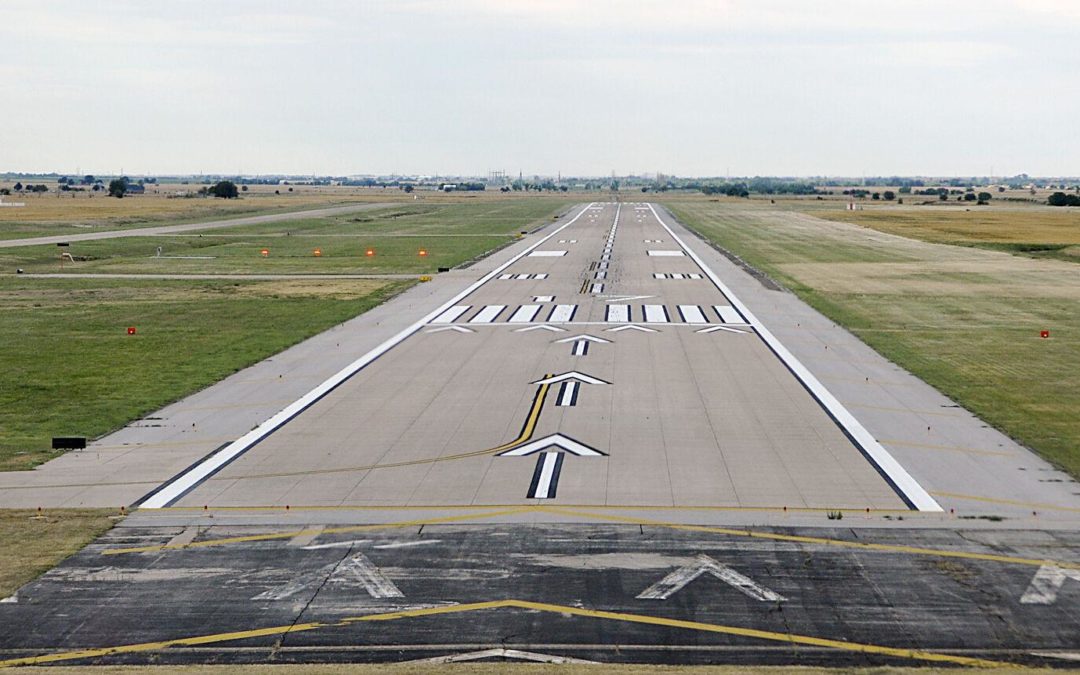ENID, Okla. — Vance Air Force Base is set to make more use of Enid Woodring Regional Airport with upgrades to the facility set to begin construction in the coming months.
Mike Cooper, military liaison for the city of Enid and Vance Development Authority, said grant money of approximately $7-8 million has been approved for three upgrades to Woodring. Around $4.5 million has been approved for the reconstruction of Woodring’s center runway, and another $2.8 million has been approved for reconstruction of the south ramp and hangar and a new joint-use hangar and radar system.
The reconstruction of the runway will effectively serve as a fourth runway for Vance, which Cooper said will greatly expand the base’s mission capabilities.
“That helps them hugely with an increase in mission capability and reducing costs because of all the movements that they do,” Cooper said. “Without having to go to an alternative base, they can do all their work right there on that plot, so they won’t miss a beat.
“Once that middle runway is complete, it’s like having a fourth runway at Vance, only it’s 4-5 miles due east of the base. It’s a great, great improvement.”
The new runway will help Vance do what it does best: train new pilots. Cooper said it will only strengthen the relationship between the community and the base. Work on the projects could begin as soon as September or October and could take around 18 months to complete.
In 2021, Woodring had 51,600 airport operations, take offs, landings or touch-and-goes, 40,600 of which were military aircraft. This highlights the importance of the Air Education and Training Command missions at Vance.
The Woodring upgrade will include reconstructing the south ramp and south hangar. The ramp is in various stages of deteriorating, which creates debris that comes up with the comings and goings of planes. Oklahoma Finance Authority has gifted the city of Enid around $1.5 million in state funds, and another $1.6 million from the Defense Community Infrastructure Program has been gifted.
The upgrades will help alleviate areas that are prone to flooding and will increase the space for parking military aircraft. The hangar upgrades will allow the accommodation of up to 10 T-6s, 11 T-38s or nine T-1s. If the hangars aren’t used by private aircraft, Vance will have the option to lease the hangars. It’s projected that a portion of Vance’s T-1s will be based at Woodring during reconstruction of the runway.
The joint-use hangar will allow more military aircraft to be stationed at Woodring and add shelter for those aircraft. It will help create a more efficient training regimen for pilots, as it will reduce travel time and fuel use of planes taking off from Vance, doing maneuvers and heading back to the base. It also will reduce the overall wear and tear of the runways at the base. There also will be maintenance equipment installed at Woodring that would allow for repairs, such as engine changeout and gear replacements.
Currently when severe weather is imminent, military aircraft are moved out of the area, even to other states. The new hangar will allow for more military aircraft storage in such situations, further lessening the fuel costs and using up fewer man hours and disrupting fewer training missions. The Oklahoma Finance Authority has given $750,000 in funding for the hangar, and the city was given $1.2 million from the Defense Community Infrastructure program.
Cooper said the improvements were aided by the efforts of U.S. Sen. Jim Inhofe. Inhofe, who will retire from the Senate in January. Inhofe has long been a proponent of the importance of military affairs. Cooper said there were several policy adjustments to the National Defense Act that helped make the process to receive such grants easier for communities.
Cooper said the Office of Local Defense Community Cooperation was created in place of the Office of Economic Adjustment. He said almost every budget year, somebody tried to eliminate OEA. The change made it part of the regular budget process.
There also was an extension from five to 10 years for intergovernmental support agreements. The longer timeline helps with the funding, planning and oversight of projects, as well as better helping states and communities fund projects. Cooper said it also helped having Inhofe’s history with military affairs and its aid to relationships with communities around military bases. Inhofe helped create the Defense Community Infrastructure Program, which helps set up a budget of around $100 million, or whatever the budget could bare, for up to 10 years. In its third year currently, it helps leverage community, state and federal dollars to make projects like the one at Woodring possible.
“There’s so few dollars out there,” Cooper said. “And if you’re able to leverage community, state and federal dollars to do stuff that they can’t do because they can’t fund it, that’s how you help yourself.
“He created all those in really the last five years, and he did it at a time when funding is low. Yeah, we’re going to get those improvements out there. Yeah, it helps us increase mission capability and reduce costs, but it leverages dollars so everybody puts something in the pot. To do what? To be able to help them train more pilots. But we could not have done that if we didn’t have such senior leadership.”
The project could begin as early as November. Construction on the joint-use hangar will begin first and take six to eight months. Work on the south ramp will commence after completing the hangar and will take three to five months.
Article by: Tanner Holubar, Enid News & Eagle 8.27.22

